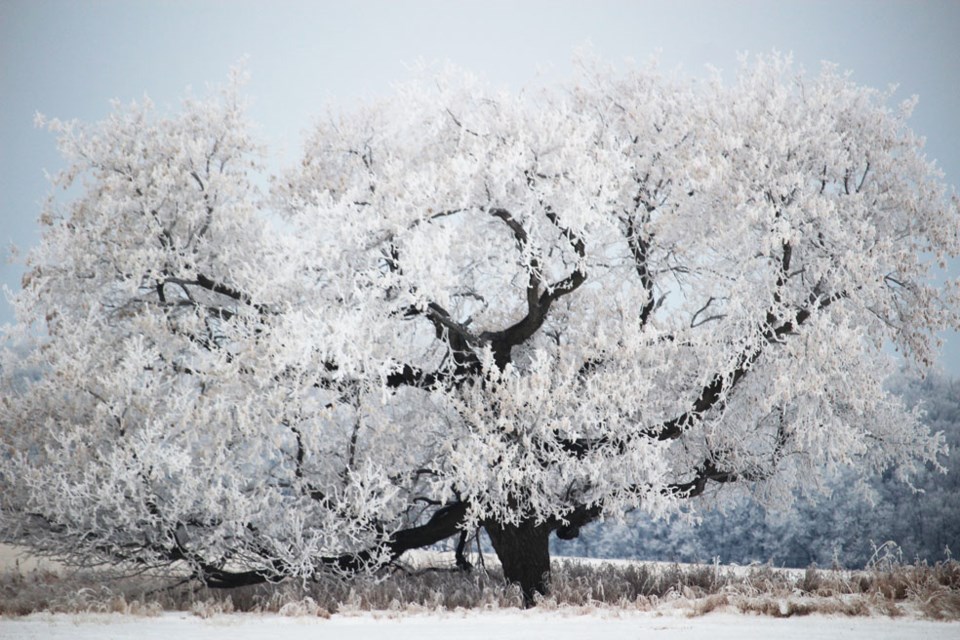There’s a grand old tree that has persisted for, probably a century at least, drawing attention to the curving end of a barn roof, visible above the trees at a historic farmstead north of Oak Lake. The farm was established by Dr. Arthur Harvey who, by 1933,was hiring farm help according to Oak Lake history, Ox Trails to Blacktop. A lone standing maple tree is eye-catching. The specimen could be over 100 years old. The property owners, the Griffiths, are happy to have this windbreak beauty thriving there.
Prior to Manitoba settlers, Canada’s prairie landscape was devoid of trees. Uwe Johnas, a farmer in the Oak Lake North Country, says his Oak Lake teacher in 1963 told the class there were no trees in the area older than 100 years. The possible exception being trees on Oak Lake Island which would have been protected from the ravages of regular prairie fires and herds of bison.
From Manitoba Historical Society’s account of the Greening of the West, “Among the earliest groups to plant trees were Mennonites from Ukraine who settled in southern Manitoba after 1874. The importance of tree culture was officially recognized with the proclamation of Arbor Day in the North-West Territories (original title of this area) in 1884, followed by Manitoba in 1886.”
The early bridges over the Assiniboine River, such as the first Harrison Bridge north of Oak Lake, would have been constructed from imported lumber. In the mid-1880s to the early 1900s logs from the Shell River Valley in the Russell area were rafted in booms down the Assiniboine, through the Oak Lake area and on to Hanbury Mills in Brandon.




